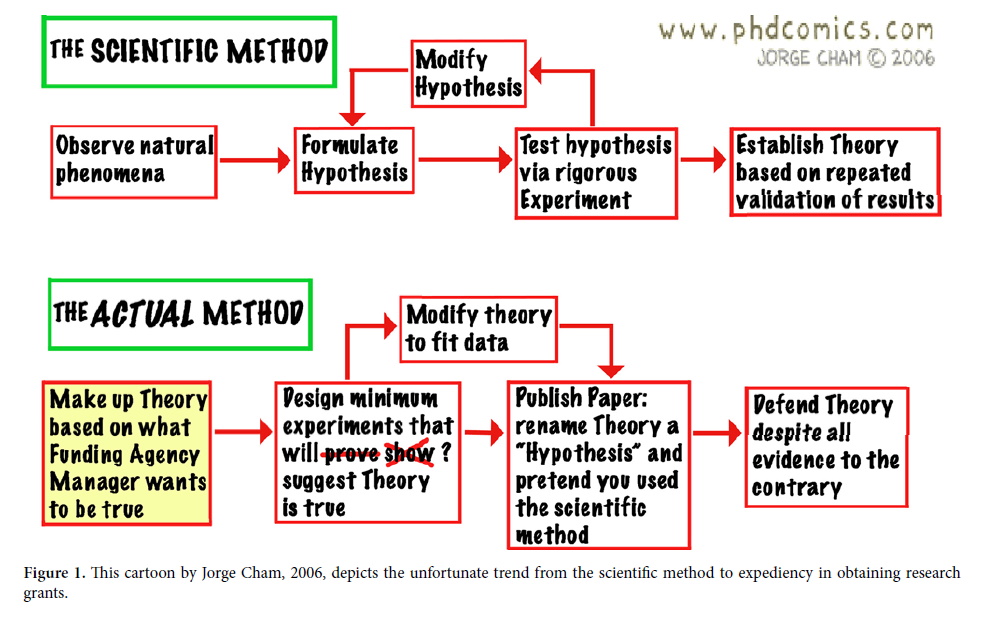Post by 1dave on Jan 28, 2023 10:58:45 GMT -5
Research Article
Summary of the Nature and Contents of “The Origin of Rocks and Mineral Deposits – Using Current Physical Chemistry of Small Particle Systems”
John Elliston

Summary of the Nature and Contents of “The Origin of Rocks and Mineral Deposits – Using Current Physical Chemistry of Small Particle Systems”
John Elliston
THE SCIENTIFIC METHOD
The new knowledge in this book has been achieved
by the scientific method. Today scientists world-wide
are dismayed by scientific reports and concepts that rely
on surveys of opinion, exaggerated media reports, postnormal
statistical assessments of likelihood, “it must be
the way I think it is because I don’t know of any alternative”,
“it is generally accepted that … therefore ….”, etc.
Intense competition for research grants has resulted in
strong bias towards politically expedient investigations
that are believed favoured by funding authorities. Once
thriving geology departments have been downgraded to
small divisions in Department of Geography, Department
of Environmental Sciences, etc. Mineral exploration
is difficult to finance and discovering new resources
harder to achieve.
Since 1936 the ‘scientific method’ has been recognised
by Australian law (Subsection 73B(1) of the
Income Tax Assessment Act 1936) as:
In 1970-74 Australian universities abandoned the
procedure that had been used to that time for award of
their highest degrees in science. DSc candidates were
required to submit a doctoral thesis embodying an original
research finding (details of a tested hypothesis). This
was “peer reviewed” by two or more external scientists
selected by the university as most appropriately qualified.
It was recognised that a candidate who had tested
an original hypothesis may be equally or better able to
interpret the results than an external reviewer. Candidates
were therefore entitled to a “right of reply” to the
written report or comments
of the universities’ reviewers.
In reply they could produce references or call on
reviewers of their own selection. University authorities
were able to fairly assess the candidate’s new research
finding and determine if it merited the award of their
highest degree.
Summary of the Nature and Contents of "The Origin of Rocks and Mineral Deposits” 27
This procedure raised standards in all scientific disciplines
to which it applied but by 1974 it was abandoned
by all Australian universities as too tedious and time
consuming to cope with the rapidly increasing number
of candidates aspiring to higher degrees. With continuing
rates of increase since 1970’s, Australian universities
now resemble production-line ‘higher degree factories’!
They quite rightly require higher degree candidates to
meet very high standards but they are uniform standards
requiring each candidate to conform to the limitations
of the knowledge of his or her degree supervisor.
Significant new discoveries cannot conform to what is
currently “generally accepted”.
All publicly funded research in Australia tends
to digress, at least to some extent, from the scientific
method toward the extreme case depicted in the American
cartoon below (Figure 1).
The new knowledge in this book has been achieved
by the scientific method. Today scientists world-wide
are dismayed by scientific reports and concepts that rely
on surveys of opinion, exaggerated media reports, postnormal
statistical assessments of likelihood, “it must be
the way I think it is because I don’t know of any alternative”,
“it is generally accepted that … therefore ….”, etc.
Intense competition for research grants has resulted in
strong bias towards politically expedient investigations
that are believed favoured by funding authorities. Once
thriving geology departments have been downgraded to
small divisions in Department of Geography, Department
of Environmental Sciences, etc. Mineral exploration
is difficult to finance and discovering new resources
harder to achieve.
Since 1936 the ‘scientific method’ has been recognised
by Australian law (Subsection 73B(1) of the
Income Tax Assessment Act 1936) as:
Systematic investigative and experimental activities that involve testing a hypothesis (new idea) by deductive formulation of its consequences. These deductions must be rigorously tested by repeatable experimentation and logical conclusions drawn from the results of the experiments. The hypothesis
must be based on principles of physical, chemical, mathematical, or biological sciences.
This would include colloid science and current nanotechnology.
must be based on principles of physical, chemical, mathematical, or biological sciences.
This would include colloid science and current nanotechnology.
In 1970-74 Australian universities abandoned the
procedure that had been used to that time for award of
their highest degrees in science. DSc candidates were
required to submit a doctoral thesis embodying an original
research finding (details of a tested hypothesis). This
was “peer reviewed” by two or more external scientists
selected by the university as most appropriately qualified.
It was recognised that a candidate who had tested
an original hypothesis may be equally or better able to
interpret the results than an external reviewer. Candidates
were therefore entitled to a “right of reply” to the
written report or comments
of the universities’ reviewers.
In reply they could produce references or call on
reviewers of their own selection. University authorities
were able to fairly assess the candidate’s new research
finding and determine if it merited the award of their
highest degree.
Summary of the Nature and Contents of "The Origin of Rocks and Mineral Deposits” 27
This procedure raised standards in all scientific disciplines
to which it applied but by 1974 it was abandoned
by all Australian universities as too tedious and time
consuming to cope with the rapidly increasing number
of candidates aspiring to higher degrees. With continuing
rates of increase since 1970’s, Australian universities
now resemble production-line ‘higher degree factories’!
They quite rightly require higher degree candidates to
meet very high standards but they are uniform standards
requiring each candidate to conform to the limitations
of the knowledge of his or her degree supervisor.
Significant new discoveries cannot conform to what is
currently “generally accepted”.
All publicly funded research in Australia tends
to digress, at least to some extent, from the scientific
method toward the extreme case depicted in the American
cartoon below (Figure 1).







